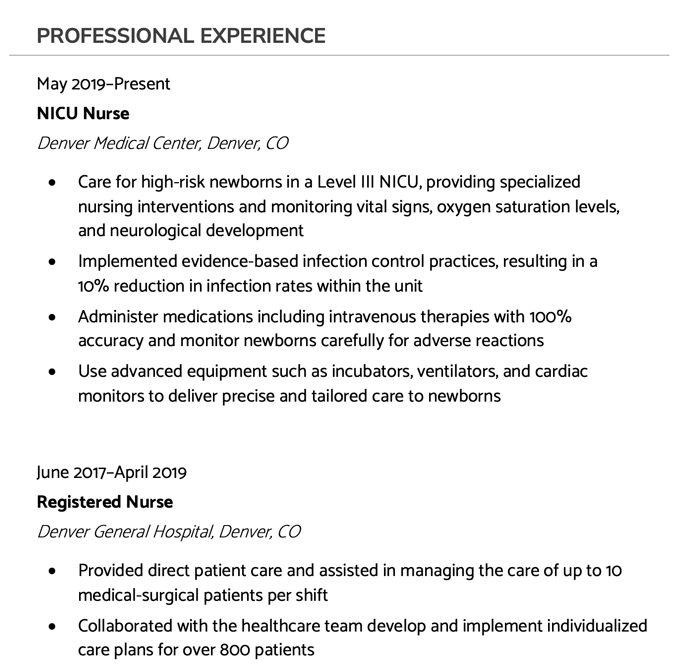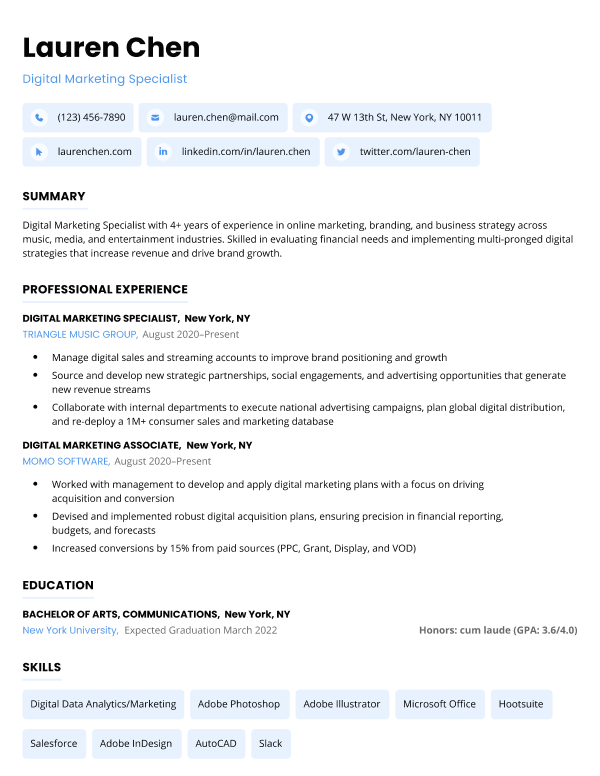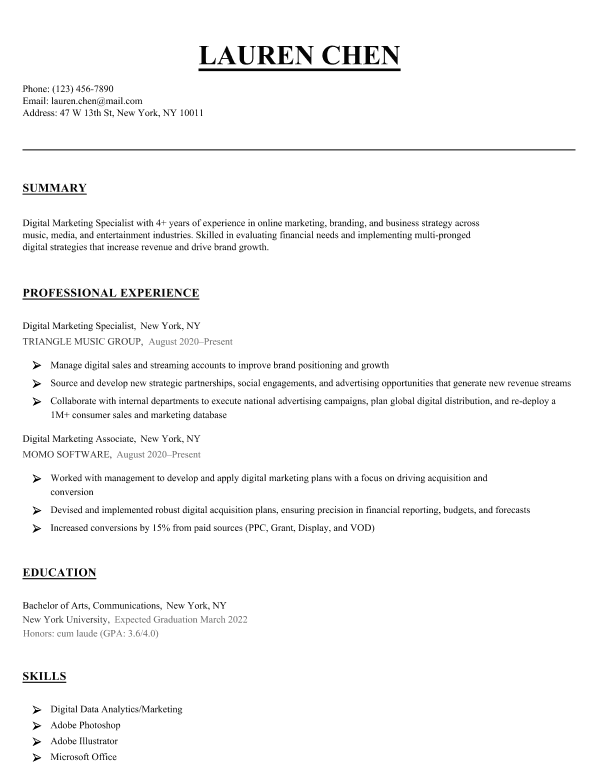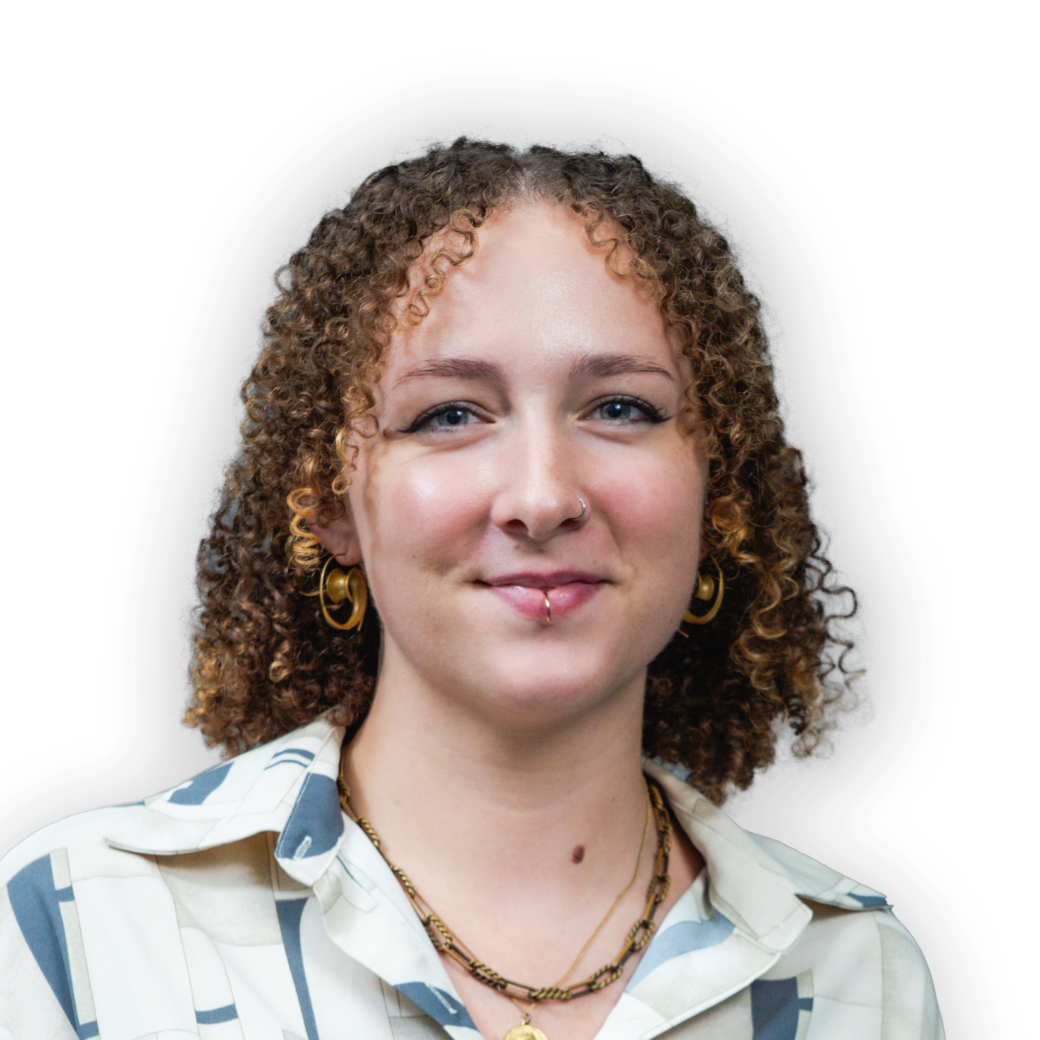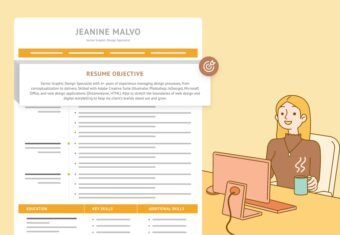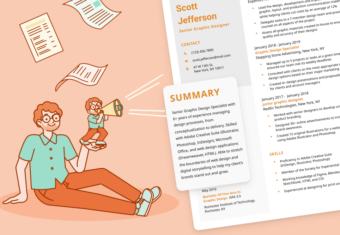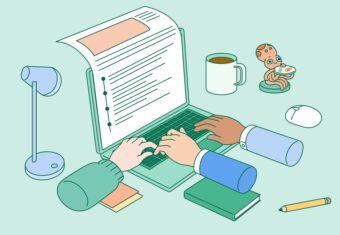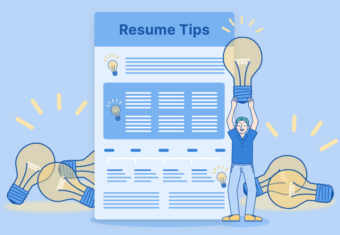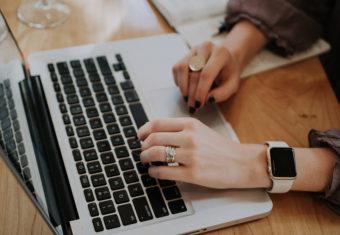You should always include the following five sections on your resume:
- Contact details
- Resume introduction
- Education
- Experience
- Skills
Everything else, including certifications, awards, and hobbies are optional additions to your resume.
What you should add to your resume depends on various factors, such as your level of experience, which resume format you pick, and your desired resume length.
Let’s explore the details. Skip to 1:24 to hear Eva Chan, a Certified Professional Resume Writer, talk about what to put on a resume:
1. Contact information
Even the best resume won’t land you a new job if employers can’t reach you. At a minimum, your resume header should include the following contact information:
- Full name
- Email address
- Phone number
Adding a mailing address on your resume is unnecessary because most employers won’t contact you by mail.
If you have social media profiles that are relevant to your professional background (like LinkedIn or a business Instagram account), you should also include them in your resume’s header.
2. Resume introduction
Your resume should start with a resume introduction, which gives an overview of your professional strengths and goals. There are a few different ways to do this.
Resume summaries emphasize how your achievements fit what the company is looking for from their ideal candidate. Here’s an example:
Committed social worker with 5+ years of experience serving the community, resolving conflicts, and providing guidance for those in need. Served in 3 to 5 weekly therapy groups. Facilitated crisis intervention services and psychosocial assessments to address needs of adolescents ranging from 10 to 18 years old.
A resume objective outlines your experience and what you seek to achieve in your career.
Resume objectives are best suited for:
- New graduates
- Current students
- Job seekers with no work experience
- Career switchers
Here’s an example resume objective:
Customer service representative looking to leverage sales and tech support experience to excel in a customer care role at your call center. My customer satisfaction rating and excellent typing skills will be an asset to your company.
If you’re not sure what information to include in your resume introduction, try using a free resume summary generator to get you started.
3. Education section
Your resume education section should list your highest level of education, the year you graduated, the location of your school, and the name of your degree (if applicable).
Only include your high school education if you’re currently enrolled in high school or don’t have a college degree.
If you graduated with honors or a high GPA, you can include those optional details in your education section. Here’s an example of a properly-formatted education section where the candidate listed cum laude on their resume:
B.A. in Political Science
Towson University — Towson, MD
May 2022
Honors: magna cum laude
We recommend only including your GPA on your resume if you’re a recent graduate or applying for grad school.
4. Work experience
Out of all the sections included in your resume, your professional experience section is arguably the most important.
Work experience shows hiring managers what you’ve accomplished throughout your professional career and demonstrates that you’re prepared to excel in the job you’re seeking.
To write an experience section that impresses recruiters, list the relevant jobs you’ve held with the most recent at the top. Under each job title, write 3-5 concise bullet points that demonstrate the skills and experience you developed working that job.
Check out this excerpt from a well-written resume work experience section:
What makes this example outstanding is that each bullet point:
- is concise
- uses strong resume keywords
- illustrates a specific, concrete example of what the candidate accomplished
- backs up those examples with hard numbers
If you’re still having trouble writing your work experience, look at resume samples from your industry.
Internships
If you have limited work experience, but have relevant internships, add them to your experience section.
To put an internship on your resume, create a separate entry in your work experience section and put “Intern” or your official title under the name of the organization. Then, add bullet points to describe your achievements.
Volunteer experience
Similarly, you can add volunteer work to your resume if you don’t have relevant work experience or your volunteer experience is highly relevant to the position you’re applying for.
Here’s an example of how you might format volunteer work on a resume:
Lancaster Community Center
Volunteer, June 2022-May 2023
- Helped plan and coordinate 5 community initiatives to give back to the community, including food drives, clothing drives, and a charity fundraiser that brought in $25,000 for impoverished families
- Coordinated with local restaurants and businesses to secure food and cash donations
- Organized volunteer schedules and responsibilities for each event, ensuring smooth operations and equal division of work
Relevant coursework
If you graduated recently and don’t have enough relevant experience to fill out your experience section, you can put relevant coursework on your resume to give a more detailed picture of how your studies have prepared you for your target role.
Here’s how one candidate highlighted related experience and skills they developed in a marketing course:
Integrated Marketing Strategy
Temple University, Fall 2022
- Collaborated with classmates to develop a marketing plan for a mock SaaS startup, incorporating elements of digital marketing, content strategy, PR, and offline events
- Used analytics tools such as Google Analytics, Tableau, and HubSpot to track campaign performance and customer engagement metrics for simulated businesses
- Studied the theory and application of consumer behavior, applying insights about decision-making, persuasion, and behavioral economics to the creation of a detailed customer journey map
5. Skills section
Hiring managers want to find candidates with diverse skills.
That’s why a thorough resume skills section is the perfect companion to your experience section, and can set you apart from other candidates.
Not sure what skills to put on your resume?
First, look at the job listing for the position you want. Typically, a job ad mentions the key skills required (and desired) for the position.
Notice how many skills are mentioned in this excerpt from a sales job description:
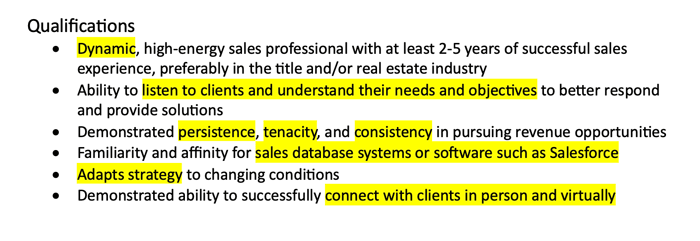
Then, compile a list of your own skills that meet these requirements, as well as any specific technical skills you have.
Your skills section should feature a mix of hard and soft skills. Hard skills are learned through specific courses or on the job, like a cashier learning how to operate a point-of-sale (POS) system. Soft skills are related to your personality, such as whether you remain calm under pressure.
Our free-to-use resume builder can make you a resume in as little as 5 minutes. Just pick the template you want, and our software will format everything for you.
Optional content
When writing a resume, it can be beneficial to include additional sections that demonstrate you’re a well-rounded candidate. If you’ve still got some blank space on your resume, consider including one of these optional sections.
Hobbies
Listing personal interests on your resume is a great way to add personality to your application.
However, if you already have enough professional experience to fill a one-page resume, or are applying at a formal company, don’t include hobbies.
If you have minimal experience or are applying to work at a casual company, feel free to add a section for your hobbies and interests to personalize your resume.
Awards
Including awards on your resume isn’t essential, but you can list them if they’re relevant to the job.
Awards like employee of the month are relevant to most jobs, so they’re always great to include. But you shouldn’t list a high school poetry-writing award if you’re applying to a server position.
Certifications
List relevant certifications on your resume if you have them. For example, if you’re a daycare worker, you might list a first aid certification on your resume.
Include the following information about your certifications:
- when they were awarded
- when they’ll expire (if appropriate)
- who issued them (for example, a college or licensing body)
You can either list certifications in a separate section or under your education section.
What not to put on a resume
Now that you know what to put on a resume, here are some things that haunt us from bad resume examples, and are guaranteed to hurt an otherwise great application.
@resumegenius If you have any of these things on your resume, it’s time to update it! #resumetips #careeradvice #jobsearch #jobsearchtips #resume ♬ We Will Rock You – Remastered 2011 – Queen
Irrelevant experience
Irrelevant experience makes your resume too long and causes your application to appear wordy and generic.
Instead, only include work experience that’s related to the position you’re applying for or has relevant transferrable skills.
Applying for work as a sales manager? A cashier position you held 10 years ago is best left off your resume.
A photo or headshot
Especially if you’re seeking work in the US, including a picture of yourself on a resume is inappropriate.
However, this rule varies by country. Here are some countries that expect you to use a photo of yourself on your resume, and countries that don’t:
Do use resume photos in these countries:
- China
- Japan
- South Korea
- Most European nations
- Most of South America
Don’t use photos in these countries:
- North America
- United Kingdom
- Australia
- Ireland
- Sweden
- India
An unprofessional email address
The email address you use for work should ideally include just your first and last name or initials.
Even if it’s been your email for decades, no hiring manager will interview you if your email is “XxskullcrusherxX@gmail.com”.
Inappropriate personal details
Details like your religion, disabilities, political leanings, and racial background shouldn’t be included on your resume.
Adding such personal information has no benefit, and puts you at risk of discrimination.
Hard-to-read fonts
Many job seekers think using a creative font on their resume helps their application stand out.
However, unusual fonts are distracting, and make your resume difficult to read.
The best fonts for resumes are timeless and professional: Garamond, Calibri, and Georgia are all great options.
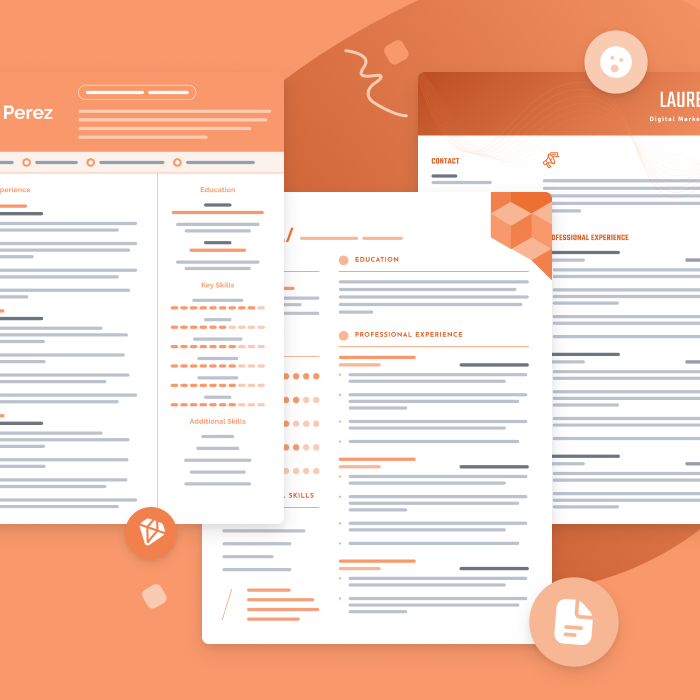
The best resume templates for 2024
One of the best ways to make your resume is by filling out one of our free resume templates. All our templates are designed by experts and free to download for Microsoft Word or Google Docs.
References
You shouldn’t include references on a resume.
Most employers don’t require references up front, and will ask for them later.
Because your resume has limited space, it’s better to ditch an unnecessary references section in favor of a longer skills list, resume introduction, or experience section.
However, if you’re using a federal resume template, include references under each position in your experience section.
Click to rate this article
4.5 Average rating



